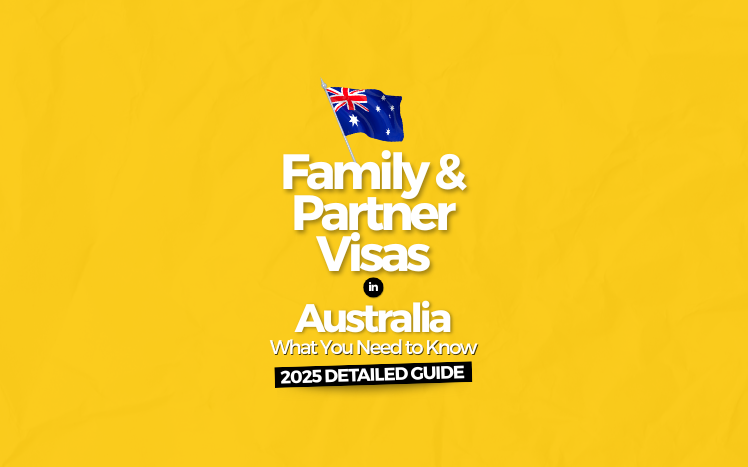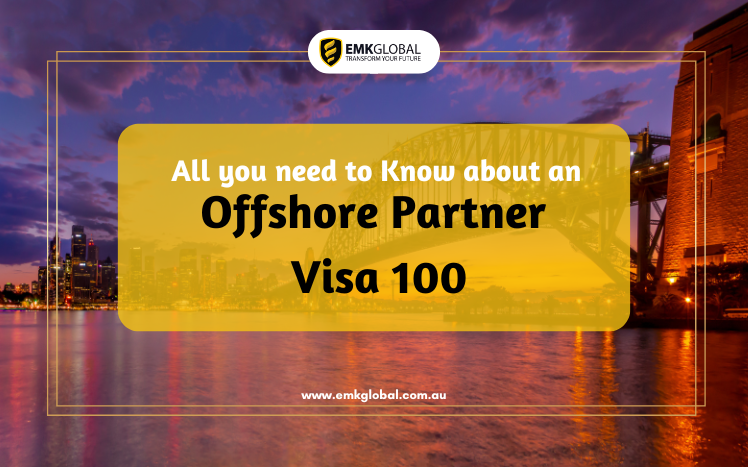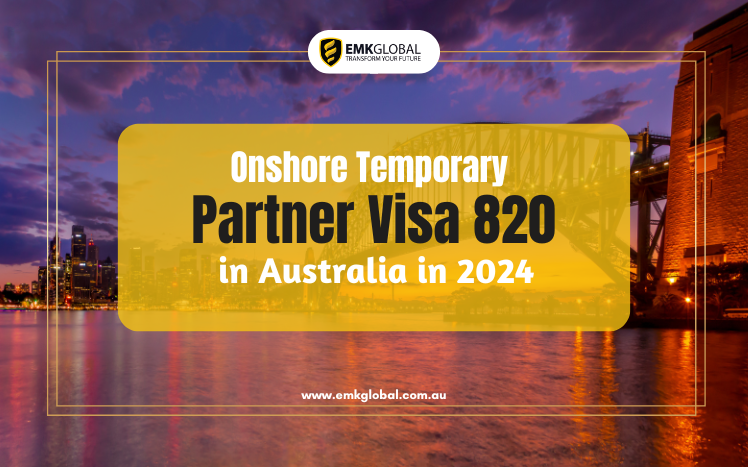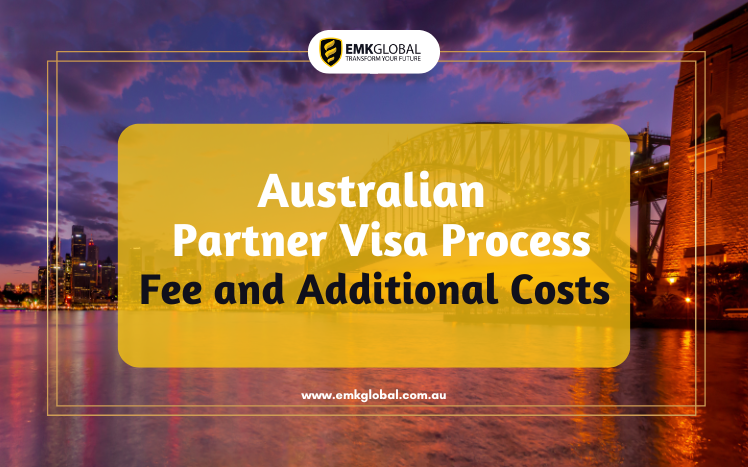Australia’s migration system has made several changes in 2025 affecting family reunion via partner, parent, child and other dependent visas. Suppose you or your loved one are applying for a family or partner visa. In that case, this guide covers visa subclasses, eligibility rules, recent policy changes, cost details, documentation, timeframes, risks, and FAQs to help you prepare.
1. Overview of Family & Partner Visa Categories
Here are the main visa categories under “Family & Partner” migration in Australia:
| Category | Purpose |
| Partner Visas | For spouses, de facto partners, and fiancé(e)s of Australian citizens, permanent residents or eligible NZ citizens. |
| Prospective Marriage Visa (Subclass 300) | If you intend to marry an Australian citizen / permanent resident / eligible NZ citizen but are currently outside Australia. |
| Parent Visas | Permanent or temporary visas for parents of Australian citizens or permanent residents. Includes contributory and non‑contributory parent visas. |
| Child / Adoption / Remaining Relative / Aged Dependent / Carer Visas | For dependent children, adopted children, relatives needing care, or family members who will be sponsored. |
2. Key Policy Changes & Updates in 2025
Below are major changes that affect family & partner visas in 2025:
- Visa Fee Increases: As of 1 July 2025, government charges for partner visas (subclasses 820/801 and 309/100, and Prospective Marriage subclass 300) increased.
- Single-Stage Partner Visa Process: Legislation has changed, requiring sponsor approval before lodging partner visa applications. The process has been streamlined to reduce delays.
- Stricter Eligibility / Evidence Requirements: Heightened scrutiny on the genuineness of relationships, cohabitation, social evidence, and financial interdependence. Sponsors may have to show more proof.
- English Language Requirements: Increased emphasis on demonstrating functional English, especially for permanent partner visa stages / sponsors.
- More Rigorous Health, Character, Police Checks: Applicants and sponsors must meet stricter health and character standards. Documents like police certificates may need to be fresher.
- Balance of Family Test Clarifications: For parent visas, definitions of “eligible children,” counting of stepchildren or adopted children, residency status of children etc., are being more clearly applied.
3. Visa Types & Eligibility Requirements
Here’s a deeper look at the main visa subclasses and what they require.
Partner Visas
| Visa Subclass | Onshore / Offshore | Key Requirements |
| 820 / 801 | Onshore (apply while in Australia) | Spouse or de facto partner of Australian citizen / PR / eligible NZ citizen. Genuine relationship, sponsor approval, cohabitation / relationship evidence. After temporary (820), then eligible for permanent (801). |
| 309 / 100 | Offshore (applicant applying from outside Australia) | Same relationship requirements. Must be married or in de facto relationship. Permanent stage (100) after temporary (309). |
| 300 (Prospective Marriage) | Offshore / may also grant entry temporarily | You must intend to marry your sponsor within 9 months of visa grant. Relationship proof (though marriage hasn’t yet happened), sponsor eligibility etc. |
Eligibility things to check:
- Are you married or in de facto relationship? If de facto, often need at least 12 months of cohabitation (or proof of equivalent interdependence) depending on state.
- Is your partner a citizen, permanent resident, or eligible NZ citizen?
- Can you prove “genuine and continuing relationship” (see section 5).
- Sponsor must meet character, financial, and sometimes English requirements.
- Health & police checks.
Parent & Other Family Visas
| Visa Subclass | Type (Permanent / Temporary) | Key Requirements |
| Subclass 143 (Contributory Parent, Permanent) | Permanent | Must pass balance of family test; sponsorship; higher fees; long wait times; financial capacity; health & character checks. |
| Subclass 103 (Non‑contributory Parent, Permanent) | Permanent | Same family test; lower fees, but very long processing times. |
| Subclass 870 (Sponsored Parent, Temporary) | Temporary | Doesn’t require balance of family test; maximum stay up to 5 years (renewable once totalling up to 10 years); sponsors must meet income requirements. |
| Others (Remaining Relative, Carer, Aged Dependent) | Permanent / Temporary | Usually strict eligibility; dependency; proof of care; familial relationship; limited places or quotas. |
4. Sponsorship & Sponsor Obligations
The sponsor is usually the Australian partner, citizen/PR, or eligible relative. They have obligations and responsibilities, such as:
- Being an Australian citizen, permanent resident, or eligible NZ citizen.
- Being a partner or family member as defined.
- Meet character requirements.
- Financially support the visa holder, ensuring they aren’t likely to access certain government support (in some visas).
- In some cases, meeting minimal income thresholds.
- Signing declarations / legal undertakings regarding relationship genuineness.
Sponsor pre-approval is now required before lodging many partner visa applications.
5. Relationship Evidence: What Counts & What Doesn’t
To satisfy Home Affairs that your relationship is genuine, you’ll need substantial evidence. Useful categories include:
- Cohabitation evidence: Joint lease or rental agreements; utility bills; joint ownership of property; shared residence history.
- Financial interdependence: Joint bank accounts; shared bills; shared investments; evidence of shared expenses.
- Social recognition: Photos of you together over time, with family/friends; shared travel; invitations or acknowledgments; social media etc.
- Commitment over time: How long you’ve been together; major life events (weddings, travel, holidays, moving in together) etc.
- De facto or married status: If married, a legal marriage certificate. If de facto, proof of living together or evidence of similar to cohabitation for required time.
Bad evidence or weak areas:
- Gaps in cohabitation or frequent periods apart without explanation.
- Inconsistent or changing stories or timelines.
- Poor documentation (uncertified photocopies, untranslated docs without certification).
- Over‑reliance on simple statements without supporting proof.
6. Costs, Fees & Other Expenses
2025 sees increased charges and additional “hidden” costs. Here’s a breakdown:
| Cost Category | Estimated Amount / Notes |
| Government Application Fee (Partner Visas 820/801, 309/100, 300) | ~ AUD 9,365 for main applicant as of 1 July 2025. |
| Dependents (over / under 18) | Approx AUD 4,685 (over‑18 dependent) & AUD 2,345 (under‑18 dependent) for Partner visas. |
| Health Checks / Medicals | Variable depending on country, age, and health history. Must be through approved providers. |
| Police Certificates | From all countries lived in for significant periods (often 12+ months) since age 16 or so. Must be current. |
| Translation / Certified Copies | If documents are not in English; certified translation adds cost. |
| Legal / Agent Fees | Optional but many people use migration agents or lawyers; costs vary widely with complexity. |
| Other Miscellaneous Costs | Biometrics, travel for health/police checks, postage, photography etc. |
Note: The required “government charges” are non‑refundable even if visa is refused.
7. Processing Times & Common Delays
- The temporary stage (e.g. subclass 820 or 309) often takes many months to process. Offshore vs onshore applications can differ.
- Once temporary visa granted, moving to permanent stage (801 / 100) also takes time.
- Delays often come from missing or old documents (e.g. expired police certificate or medical), unclear relationship evidence, or sponsor not meeting obligations.
- Bridging visas: If you apply onshore, you may be granted a bridging visa while waiting. Be sure to maintain your legal stay in Australia.
8. Balance of Family Test (Parent Visas)
For many permanent parent visas (Subclass 103, 143, 804, 864), you must satisfy the Balance of Family Test. Key points:
- You must have at least half of your children (biological, adopted or stepchildren) who are eligible children living in Australia as citizens or permanent residents or eligible NZ citizens; or have more eligible children in Australia than in any other single country.
- All children count (adopted, step, biological), regardless of age or dependency. † But be careful: children overseas temporarily still count, but proof of residency status needed. Deceased children also need documentation.
- If you cannot pass this test, you generally cannot apply for those parent visas permanently. BUT some temporary parent visas (e.g. Subclass 870) do not require the Balance of Family Test.
9. Risks, Pitfalls & Tips for Success
Here are things people often overlook, and how to reduce risk:
- Submit everything and keep things updated: As your relationship evolves, or if you move, or documents expire, you need to update the visa application record.
- Timely health & police checks: If these expire before visa grant, delays or even refusals may occur. Always check validity times.
- Honesty is crucial: Misrepresenting relationship, hiding previous marriages / separations, or finances can lead to refusal or even bans.
- Sponsor eligibility: Even if the applicant is fine, the sponsor must meet obligations; failure there can derail the application.
- Financial capacity: It may not always be explicitly about income; showing actual ability to support, living arrangements, financial contributions etc. helps.
- Travel and visa conditions: Some temporary visas prohibit certain types of travel or have “no further stay” conditions; know what’s allowed.
10. FAQs
Q: Do I have to be married to apply for a partner visa?
A: No. You can apply if you are in a de facto relationship. Most de facto cases require proof of living together for 12+ months (or equivalent) depending on your state.
Q: What if I don’t meet the Balance of Family Test for a Parent visa?
A: Then you generally can’t apply for permanent parent visas like subclass 103, 143 etc. But you may consider temporary parent visa options (e.g. subclass 870) which don’t require the test.
Q: How long is the wait for partner visas?
A: It depends on whether you apply onshore or offshore, how complete your documentation is, how strong your relationship evidence is, and Home Affairs workload. It may take 12‑24 months or more in some cases.
Q: Can my partner/spouse work while I wait for the permanent stage?
A: Usually yes, once the temporary partner visa is granted (820 or 309). It often also gives the right to study. Check visa conditions carefully.
Q: What if we break up before the permanent partner visa is granted?
A: You must notify Home Affairs. The temporary visa could be revoked. If there’s family violence or other complicating factors, there may be safety provisions.
Q: Does Australia grant any visas faster for certain nationalities?
A: Not officially for nationalities, but if your documentation is clean, relationship evidence strong, and you meet all requirements without outstanding issues, that speeds things up. Also, applicants from low “risk” countries may get faster processing.
Example Case Study (Illustrative)
Here’s a fictional example (based on common elements) to show how this works in practice.
Case Study
Maria is married to David, an Australian citizen. They have lived together for 3 years in Sydney. Maria is applying for a Partner Visa (820/801).
What Maria needs to gather:
- Marriage certificate
- Proof of joint residence: lease agreement in both names, shared utilities, joint bank account
- Social evidence: photos together over years, joint holidays, letters from family/friends attesting to relationship, social media posts etc.
- Health check & police certificates from all countries Maria has lived in >12 months.
- Sponsor (David) needs to pass character and income obligations; may need to show functional English level if required.
- Pay application fee ~AUD 9,365; also budget for translations, medicals etc.
Potential issues:
- If a document expires during processing (say a police certificate becomes old), application may be delayed or even refused.
- If relationship proof is sparse, or cohabitation is recent or interrupted, extra scrutiny may be applied.
Timeline:
- Temporary visa (820) grant might take 12‑18 months
- Permanent stage (801) may follow after 2 years or once certain requirements have been met
Final Thoughts
Family and partner visas are one of the most emotionally important migration pathways — allowing people to live with loved ones. But they also come with complexity: strict evidentiary requirements, significant costs, sponsor obligations, and long processing times.
If you’re planning to apply in 2025:
- Start early. Collect evidence over time.
- Keep all your documents valid.
- Be transparent and thorough.
- Understand both your and your sponsor’s obligations.
- Budget not just visa fees but all associated costs.
- Consider legal or migration agent help if your case is complex (children, prior marriages, overseas separations etc).





